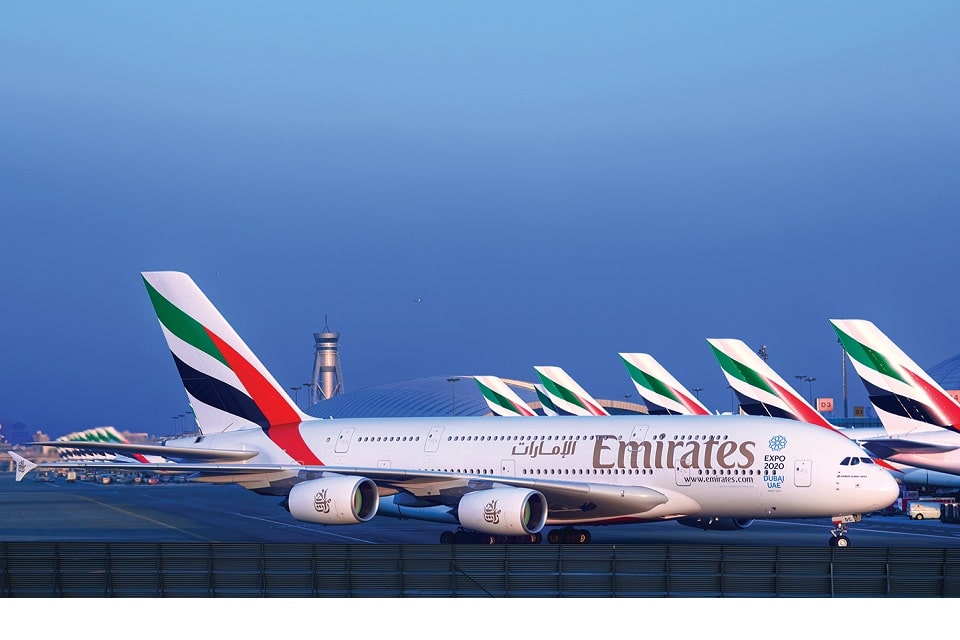Aviation
Emirates covers customers from COVID-19 expenses, in industry-leading initiative to boost travel confidence

Emirates covers customers COVID-19 expenses industry-leading initiative boost travel confidence World’s first airline to offer its passengers free cover for COVID-19 medical expenses and quarantine costs, in a unique assurance when they fly to any destination, in any class of travel
Dubai, UAE, 23 July 2020 – Emirates customers can travel with confidence, as the airline will cover medical expenses of up to EUR 150,000 and quarantine costs of EUR 100 per day for 14 days, should they be diagnosed with COVID-19 during their travel, while they are away from home. This cover is provided by the airline, free of cost to its customers.
HH Sheikh Ahmed bin Saeed Al Maktoum, Emirates Group Chairman and Chief Executive said: “Under the directive of His Highness Sheikh Mohammed, UAE Vice President and Prime Minister and Ruler of Dubai, Emirates is proud to lead the way in boosting confidence for international travel. We know people are yearning to fly as borders around the world gradually re-open, but they are seeking flexibility and assurances should something unforeseen happen during their travel.”
First airline in the world to offer free, global cover for COVID-19 related costs
This cover for COVID-19 related medical expenses and quarantine costs is offered by Emirates free of cost to its customers regardless of class of travel or destination. This cover is immediately effective for customers flying on Emirates until 31 October 2020 (first flight to be completed on or before 31 October 2020). It is valid for 31 days from the moment they fly the first sector of their journey. This means Emirates customers can continue to benefit from the added assurance of this cover, even if they travel onwards to another city after arriving at their Emirates destination.
Customers do not need to register or fill in any forms before they travel, and they are not obligated to utilise this cover provided by Emirates.
Any impacted customer who has been diagnosed with COVID-19 during their travel simply has to contact a dedicated hotline to avail of assistance and cover.
The hotline number, and details of what COVID-19 related expenses are covered, is available on www.emirates.com/COVID19assistance.
Flexibility and assurance
With the gradual re-opening of borders over the summer, Emirates has revised its booking policies to offer customers more flexibility and confidence to plan their travel. Customers whose travel plans are disrupted by COVID-19 related flight or travel restrictions, can simply hold on to their ticket which will be valid for 24 months and rebook to fly at a later time; request travel vouchers to offset against future Emirates purchases, or request refunds via an online form on Emirates’ website or via their travel booking agent.

Dubai is open: Customers from Emirates’ network can now to travel to Dubai as the city has re-opened for business and leisure visitors with new air travel protocols that safeguard the health and safety of visitors and communities. For more information on entry requirements for international visitors to Dubai, visit: www.emirates.com/flytoDubai
Health and safety first: Emirates has implemented a comprehensive set of measures at every step of the customer journey to ensure the safety of its customers and employees on the ground and in the air, including the distribution of complimentary hygiene kits containing masks, gloves, hand sanitiser and antibacterial wipes to all customers. For more information on these measures and the services available on each flight, visit: www.emirates.com/yoursafety
Travel restrictions: Customers are reminded that travel restrictions remain in place, and travellers will only be accepted on flights if they comply with the eligibility and entry criteria requirements of their destination countries. Visit: www.emirates.com/travelrestrictions
Dubai residents can check the latest travel requirements at: www.emirates.com/returntoDubai

Aviation
Boeing, Antonov to Collaborate on Defense Projects

– MOU represents Boeing’s commitment to work with Ukrainian industry
– Includes exploring opportunities for collaborating on in-country support of Unmanned Aerial Systems
A Memorandum of Understanding was signed today by Boeing and Antonov Company to investigate potential collaboration on defense-related projects.
“We’re happy to keep collaborating with the Antonov Company to help Ukraine’s economic development and expansion,” stated Ted Colbert, CEO and president of Boeing Defence, Space, & Security.
Airbus and the Antonov An-225: The Best Partnership:Click here
“This agreement demonstrates our ongoing efforts to find more opportunities to work with Ukrainian industry, which was underscored by our signing of the Ukrainian Defence Industry Compact earlier this year.”
The areas of potential collaboration identified in the agreement consist of training, logistical support and overhaul services for tactical Unmanned Aerial Systems utilized by the Ukrainian Armed Forces, which includes the ScanEagle. In addition, the companies will also explore opportunities for Antonov to provide engineering support to Boeing.
The six largest cargo aircraft ever built in the aviation industry:Click here
“A strong, innovative, and efficient defense industry is key to sustainable economic development and national security, and we are extremely excited to collaborate with Boeing,” said Ievhen Gavrylov, CEO of Antonov Company.
This agreement brings a whole new level of opportunity to implement the latest and most effective solutions – in addition to the possibility of future projects with Boeing in the aerospace and defense industry.”
-

 Travel1 week ago
Travel1 week agoAir India to Expand US Operations with Three New Routes After a Decade
-

 Travel2 weeks ago
Travel2 weeks agoWhy We Should Avoid These Stamps in a Passport
-

 Airlines1 month ago
Airlines1 month agoInvestigations Reveal Fake Chinese Titanium in Boeing and Airbus Jets
-

 Tech4 weeks ago
Tech4 weeks agoChina’s CATL Plans 1,800-Mile Electric Plane Launch by 2027
-

 Airport3 days ago
Airport3 days agoTop 10 Largest Airports in the World by Size
-

 Aerospace4 weeks ago
Aerospace4 weeks agoChina’s Fighter Jets Turn Wings into Autonomous Drones
-

 Airlines4 days ago
Airlines4 days agoAir India Rolls Out A350s for Delhi-New York JFK and Newark Routes
-

 Defence3 weeks ago
Defence3 weeks agoBoeing Enhances Chinook with New Engines and Block II Upgrades at $96 Million







